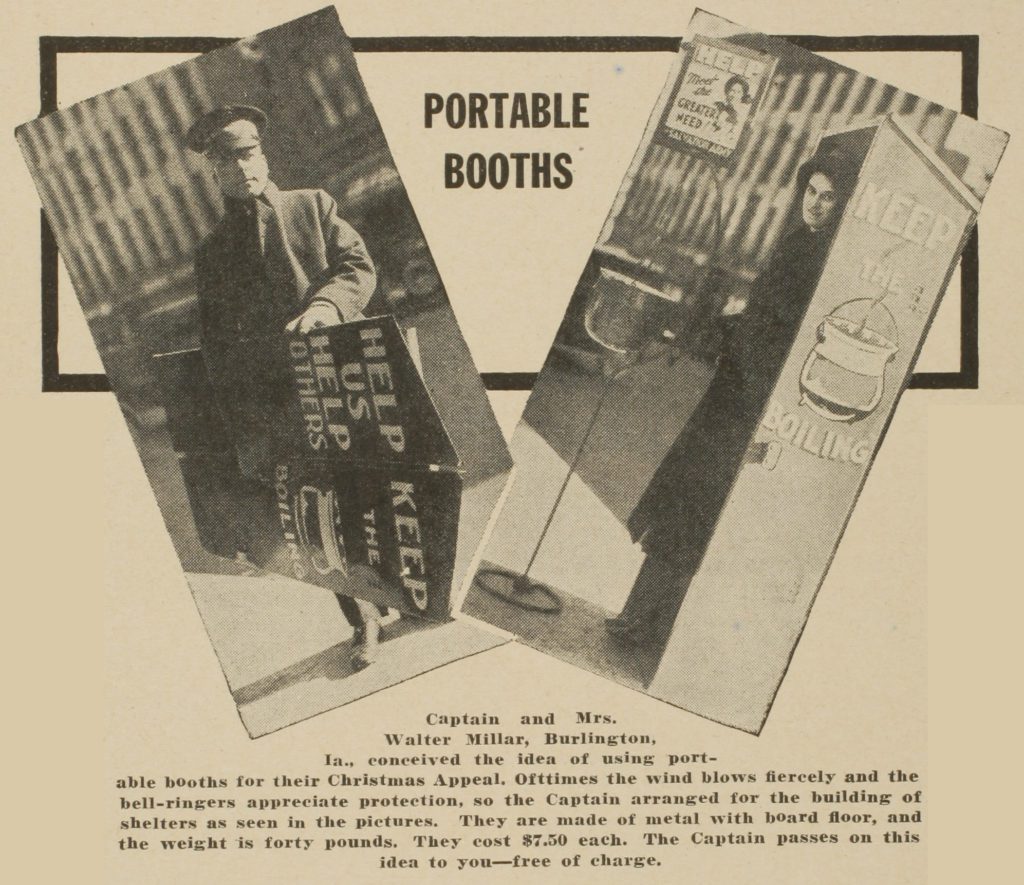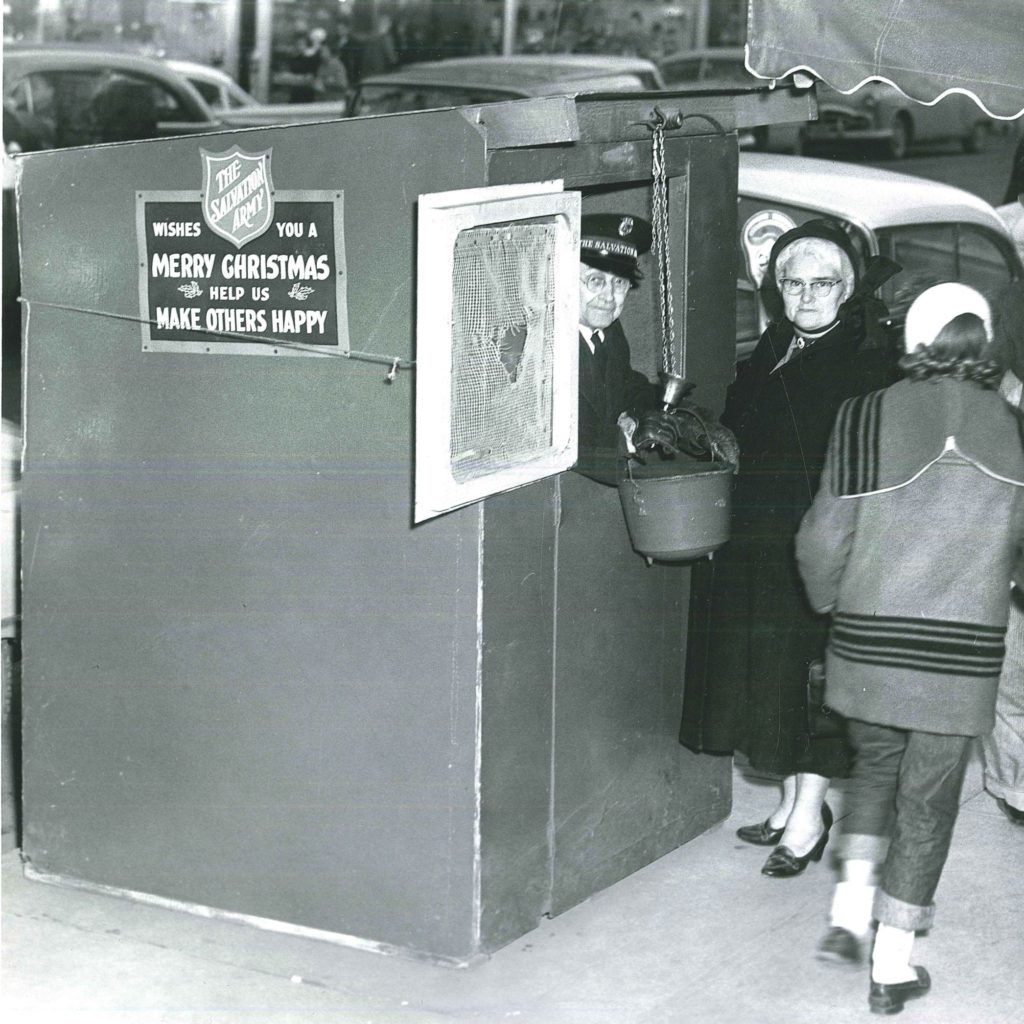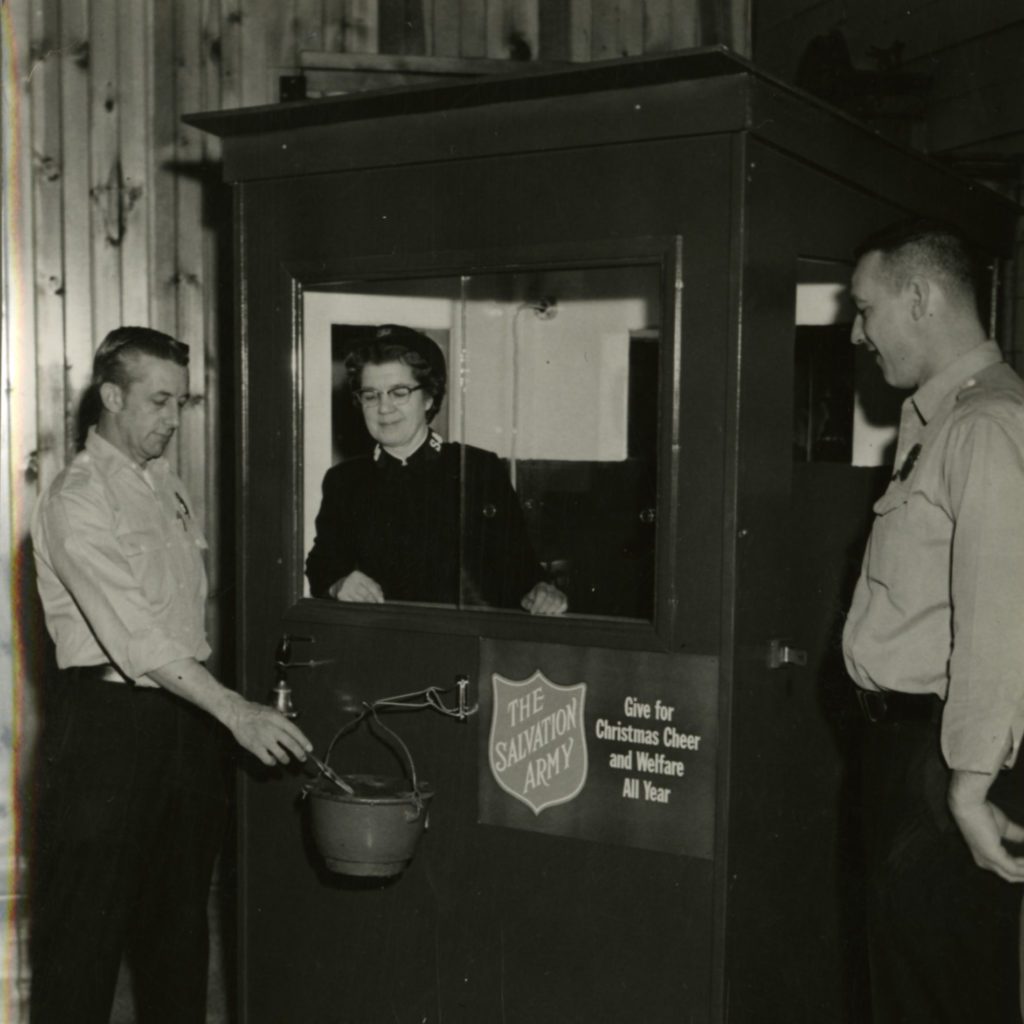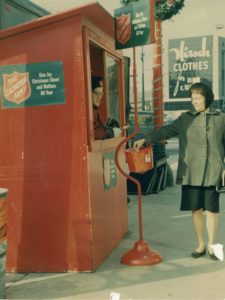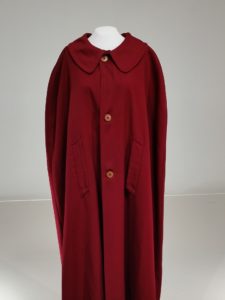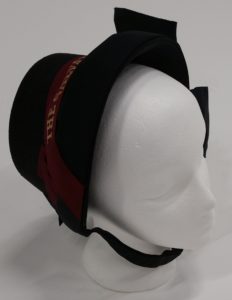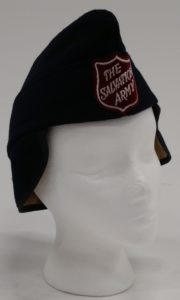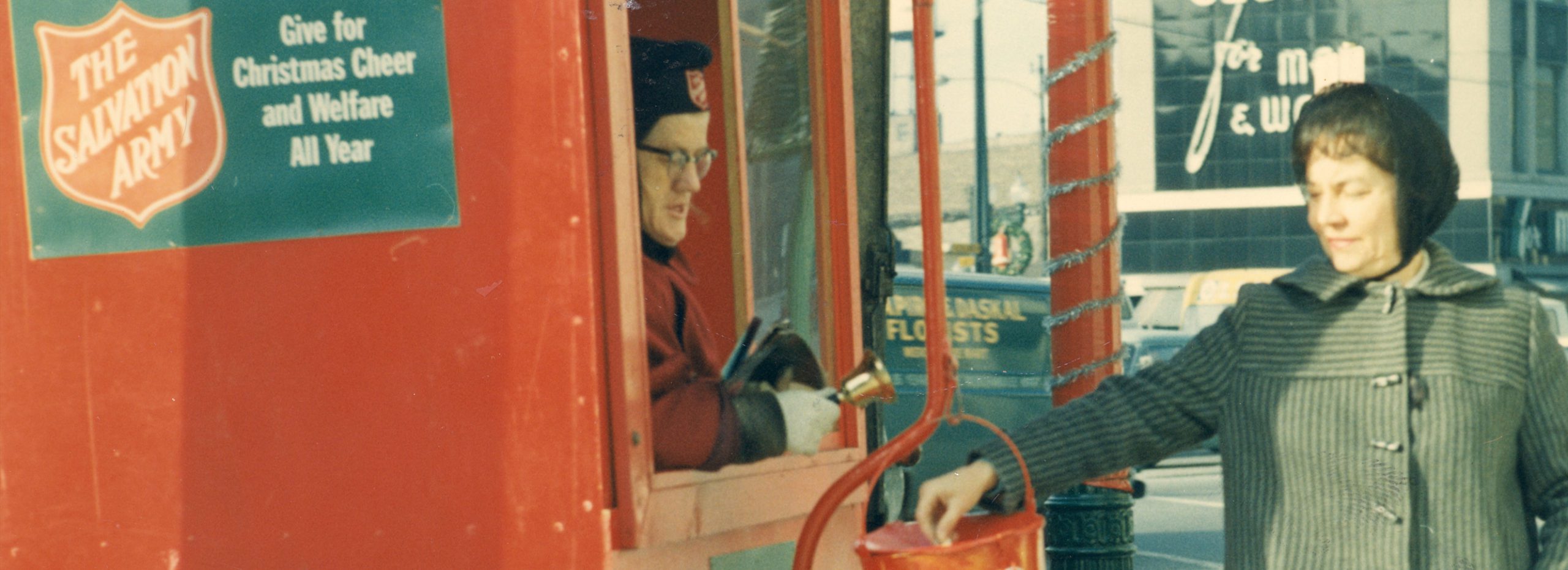
Brrr, It’s Cold Outside
Sub-zero temperatures, sideways rain, sleet, ice, wind, and snow that is sometimes measured in feet rather than inches – this Midwestern weather can challenge the fortitude of even the heartiest bellringer. Some kettle stand locations provide shelter from harsh winter weather, but others are out in the open and subject the bellringer to the weather.
In 1933, Captain and Mrs. Walter Millar, who were the corps officers (local ministers) for the Burlington, Iowa corps, invented a way to shield bellringers from bad weather. Their kettle booth was made from metal, offered three walls to shield the bellringer, and weighing about forty pounds was portable. The kettle booth served an important role for specific kettle stands and bellringers.
Click image to enlarge.

